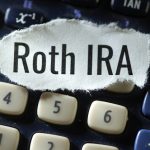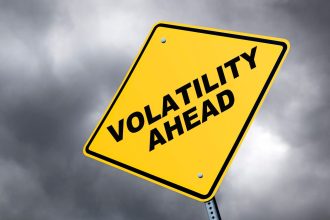In celebration of Teacher Appreciation Week, your incredible dedication and hard work are recognized and honored. Your commitment to shaping young minds and nurturing the potential of each student does not go unnoticed.
However, while you focus on educating others, it’s equally important to plan for your own future. Whether you are at the beginning of your teaching career or looking ahead to retirement, knowing your options will help you plan effectively and make informed decisions that enhance your financial security.
Common Retirement Savings Vehicles For Teachers
Defined Benefit Pension Plans
These plans provide you with a fixed, pre-determined benefit upon retirement, calculated based on factors such as salary history and length of employment. Typically funded by employers, these pension plans offer security as they do not depend on stock market performance.
Eligibility for defined benefit pension plans among teachers varies by state and district. Nonetheless, you must often fulfill a minimum number of years in service. Some systems may also factor in age or other conditions to be met before benefits can be claimed.
You should also be aware of vesting periods or the time you must work before you have a non-forfeitable right to receive pension benefits upon retirement.
Note that pension plans have limitations. They are inflexible, often providing no options for early withdrawal or loans. They also lack portability, meaning you may not be able to carry your accrued benefits if you move to a different state.
403(b) Plans
Named after the section of the Internal Revenue Code that governs them, 403(b) plans allow you to save for retirement by contributing a portion of your income into individual accounts.
These contributions are typically made pre-tax, translating to immediate relief by reducing your taxable income. Investments in a 403(b) plan can grow tax-deferred until withdrawal, usually at retirement age.
Like 401(k)s common in the private sector, the IRS annually sets the contribution limits for 403(b) plans. For 2024, the basic limit on elective deferrals is $23,000. However, if you are 50 or older, you can make an additional catch-up contribution of up to $7,500.
A unique feature of 403(b) plans is the 15-Year Rule, which allows employees with at least 15 years of service at the same educational institution to contribute an additional amount up to $3,000 a year, capped at a lifetime limit of $15,000. This rule is particularly advantageous for long-term employees who may have been under-saving in the earlier years of their careers.
457 Plans
A 457 plan is a tax-advantaged retirement savings option available primarily to employees of state and local governments and of some tax-exempt organizations.
One of the unique aspects of 457 plans is that they are not subject to the early withdrawal penalties imposed on other retirement accounts. This means you can access funds when you separate from service, regardless of age, without the 10% penalty that typically applies to early withdrawals.
This feature makes the 457 plan an excellent option for those who plan to retire early or switch careers. Additionally, these plans often allow participants close to retirement age to make catch-up contributions that exceed the standard contribution limits.
In 2024, the contribution limit is $23,000, the same as 403(b) and 401(k) plans. However, the special catch-up contributions allowed under a 457 plan can enable older workers or those within three years of normal retirement age to contribute up to $46,000.
This provision is designed to help individuals who may have started saving for retirement later in their careers or who wish to increase their retirement funds in their remaining years of employment.
Individual Retirement Accounts
Teachers can opt for either traditional or Roth IRAs, each with distinct tax advantages. Traditional IRAs offer tax deductions on contributions with deferred taxes on earnings, while Roth IRAs feature post-tax contributions with tax-free growth and withdrawals.
For 2024, the contribution limit for Traditional and Roth IRAs is $7,000 ($8,000 for those aged 50 and older with catch-up). The IRS periodically adjusts these limits to account for inflation.
You should note that the ability to contribute to a Roth IRA phases out at higher income levels, whereas Traditional IRAs do not have income limits for contributions. However, there are limits to deductibility if you or your spouse has access to a workplace retirement plan.
IRAs offer additional opportunities to save and invest with potential tax advantages that might not be fully available through employer-sponsored plans like 403(b) or 457.
State-Specific Programs
Some states offer specific retirement benefits for their educators, including supplemental pensions or specialized investment options that address local cost of living and retirement challenges.
For instance, in California, teachers have access to CalSTRS or the California State Teachers’ Retirement System, which provides a comprehensive benefits package that includes not only retirement income but also disability and survivor benefits, crucial for long-term security given the state’s high cost of living.
In Texas, the absence of Social Security participation for state employees makes the Teacher Retirement System a vital component of retirement planning, offering a defined benefit plan based on salary and service years.
Meanwhile, New York’s Teachers’ Retirement System (NYSTRS) allows educators to retire with full benefits after several service years, an attractive option for those who begin their careers early.
For information on the specific benefits available in your state, you may contact your state retirement agencies or visit their websites.
Factors to Consider When Choosing Retirement Savings Vehicles
Personal Financial Situation
Assess your current income, savings, anticipated expenses, and other financial obligations such as mortgages or college funds. A clear understanding of your financial health helps determine how much needs to be saved to maintain a desired standard of living in retirement.
You should also consider your savings rate and how it aligns with your retirement goals, adjusting your budget to prioritize retirement savings where necessary.
Age And Proximity To Retirement
Age plays a significant role in retirement planning. Younger teachers have the advantage of time, which allows their investments to grow through the power of compounding interest. For them, strategies that focus on long-term growth and higher risk tolerance may be more appropriate.
Conversely, teachers closer to retirement age might focus on preserving capital and reducing investment risk. They may prefer stable income investments and prioritize plans like IRAs or annuities that can provide a steady income stream in retirement.
Risk Tolerance
This refers to your comfort level with the potential ups and downs in the value of your investment portfolio. Those with a higher risk tolerance may be more comfortable investing in stocks or mutual funds with higher volatility but potentially higher returns.
Teachers with lower risk tolerance might prefer more conservative options, such as bonds or fixed annuities, which offer more stability and less risk of loss. Understanding your risk tolerance can help you select the right mix of investments for your retirement portfolio.
Health Considerations
If you have chronic conditions or a family history of health issues, you may need to save more to cover higher medical costs in retirement. This might include investing in health savings accounts or planning for long-term care insurance.
Conversely, good health might allow you to extend your career, postponing the need to tap into retirement savings and allowing more time for those savings to grow.
Career Stability And Job Security
Job security and the likelihood of continuous employment influence how aggressively you save for retirement. If you have job stability and know your income is secure, you might be confident in your investment choices.
If you have uncertain job prospects, such as adjunct professors or teachers on temporary contracts, you might need to be more conservative with your retirement savings. You may focus on the liquidity and safety of the principal to guard against potential periods of unemployment.
Economic And Market Conditions
Economic downturns, inflation rates, and fluctuating interest rates can all affect the performance of retirement accounts. You should stay informed about economic trends and consider these factors when planning your investments.
During volatile market conditions, it may be wise to diversify investments to mitigate risk or to seek the advice of a financial advisor to make informed decisions.
Final Thoughts
As you continue to invest in the futures of your students, remember to also invest in your own. Navigating the retirement landscape might seem complex, but taking the time to understand your options can lead to a more secure and fulfilling retirement.
Consider consulting with a financial advisor to tailor a retirement strategy that aligns with your personal and professional circumstances. By doing so, you ensure that your retirement years are as rewarding as the time you spent in the classroom.
Read the full article here














